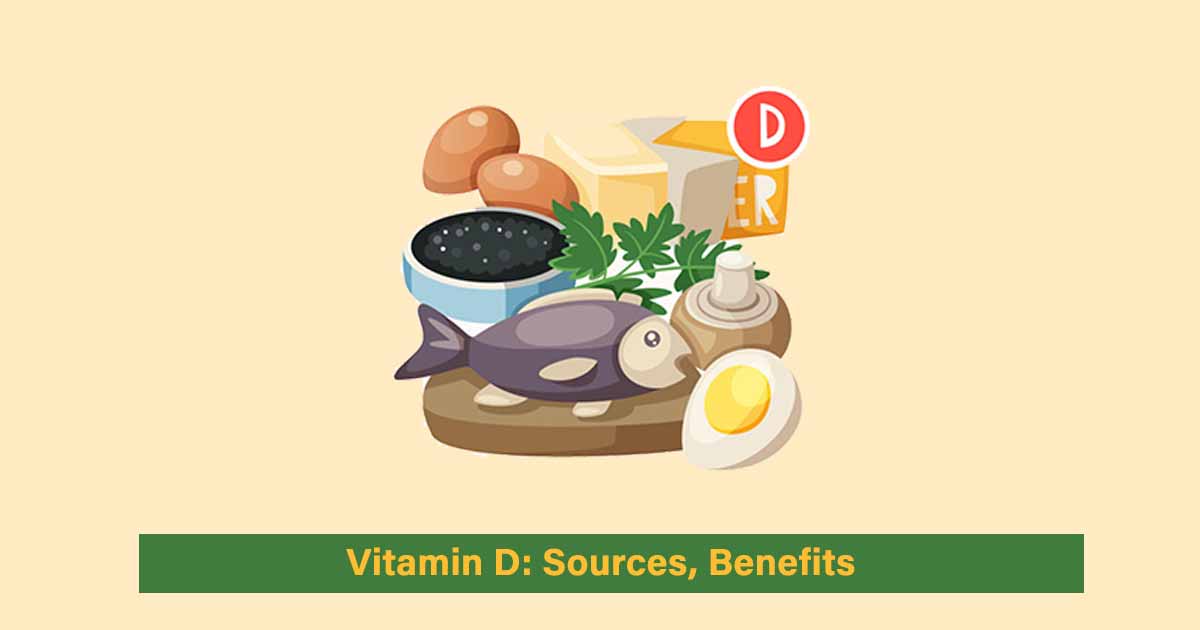Vitamin C, also called ascorbic acid, is an essential nutrient for human beings and other multicellular animals. It is a water soluble vitamin found in fruits, vegetables, organ meat like the kidney and liver of some animals. It is at the peak of ripeness that these foods contain the highest amount of vitamin C.
Human beings cannot make vitamin C in the body and so need to source it from diet, but animals can synthesize it.
Since vitamin C is a water soluble vitamin, heat and light can destroy it. Cooking for a long time is not good for the vitamin. The best method is using quick heating with methods such as stir-frying or blanching, and with little water.
As it is water soluble, it can dissolve in water and be absorbed by the body. It cannot be stored in the body but must be supplied daily through diet or supplement.
It plays a main role in normal body function, disease prevention, protein formation, immune function.
Methods used to detect and determine vitamin C are High-performance liquid chromatography (HPLC), spectrophotometric methods, electrochemical sensing methods, titrimetric, fluorimetric methods.
Sources of Vitamin C
There are numerous sources of vitamin C, such as vegetables, fruits, and organ meat. The fruit sources are citrus fruits like oranges, grapefruit, lime and lemon, tomatoes, strawberries, kiwi fruit, guava, mango, white potatoes, green and red pepper, Indian gooseberry, papaya, etc.
Cruciferous vegetable sources are cabbage, broccoli, Brussels sprouts, cauliflower. Other sources are potatoes, fortified cereals, while the liver of animals is another great source.
Red pepper and orange are the richest source of vitamin C per serving.
Functions of Vitamin C
Ascorbic acid plays a vital role in the normal body’s functioning and physiological process. It helps in tissue repair, wound healing among others. The main functions of vitamin C are:
1. Antioxidant
Vitamin C is a powerful antioxidant. It helps to mop up free radicals in the body that cause oxidative stress. This stress could lead to diseases such as common cold, cancer, cardiovascular diseases, age-related degeneration like Alzheimer disease, cataract.
2. Wound Healing
By the formation of collagen, connective tissues, ascorbic acid aids in wound healing. The antioxidant property of vitamin C also helps in wound healing and protects the gum.
3. Skin Protection
It helps to prevent damage by UV-light exposure. Though it cannot absorb UV light, and act as sunscreen effectively, the antioxidant property of ascorbic acid helps to prevent damages by free radicals. Combination of two antioxidants, such as vitamin C and E, will lead to enhanced UV light protection and cell damage.
Vitamin C helps prevent wrinkles, skin tumor.
4. Common Cold
Studies suggest that intake of ascorbic acid can prevent common cold. It reduces the duration of cold in the young and adults because of its anti-histamine effect at high doses.
According to studies, a daily intake of 200 mg vitamin C may prevent common cold.
5. Protein Synthesis
Vitamin C helps in the protein synthesis by its role in collagen production. Hydroxyproline, an amino acid that helps to build and stabilise collagen, is only synthesized in the presence of vitamin C.
The protein type, collagen, is found in the body, especially in skin, connective tissues, bones, tendons, cartilage. It helps to prevent bone loss, joint pain, wrinkles and dryness on the skin. It also helps to build muscle mass.
6. As a reducing and capping agent
Reducing agent helps to synthesize nanoparticles, while capping agent acts to stabilise the nanoparticle. Vitamin C plays both roles in the synthesis of metal nanoparticles, such as gold, sliver, and copper.
7. Cardiovascular diseases
Oxidative damage in the body is a leading cause of cardiovascular diseases such as stroke, heart attack, coronary heart disease. Antioxidants in ascorbic acid help to improve nitric oxide production, vasodilation, reduce vascular smooth muscle cell death. This will reduce plaque instability and prevent plaque rupture in atherosclerosis.
READ ALSO: The Main Health Benefits of Date Palm Fruit
8. Cancer treatment
As an antioxidant, vitamin C can generate hydrogen peroxide and help to protect the DNA, proteins, lipids from oxidative stress and damage caused by free radicals. Vitamin C also protects other antioxidants, such as Vitamin A and E, from oxidation.
Researches indicate it is beneficial to patients with terminal cancer, and improve their length of life. They give dose vitamin C injection supplementation in such a scenario. However, this injection should be avoided in people with kidney disease, hemochromatosis, and glucose 6-phosphate dehydrogenase deficiency.
9. Prevent Cataract and Age-related macular degeneration (AMD)
Oxidative stress may contribute to age-related macular degeneration (AMD) and cataract, two leading causes of vision loss in older people. Ascorbic acid intake of above 300 mg/day reduces the risk of cataract and AMD by a high degree.
10. Arthritis
Osteoarthritis results in destruction of cartilages, putting pressure on bones, joints. Ascorbic acid helps to make collagen and collagen is an essential part of the cartilage.
Also, free radicals also cause destruction of the cartilage. Ascorbic acid helps to reduce the damage.
11. Diabetes
As an antioxidant, it may help to prevent heart diseases and stroke, the leading cause of death in diabetes.
12. Enhance Absorption of Iron
Ascorbic acid enhances the absorption of non-heme iron, the type of iron in leafy vegetables by the body. This is by reducing iron to ferrous form, an easily absorbed form of iron. It forms a chelate with ferrous iron, making it more soluble.
13. Energy
The body needs ascorbic acid to synthesize carnitine, a small molecule that helps in the transport of fat to the mitochondria for conversion into energy.
14. Neurotransmitter Function
Norepinephrine is the neurotransmitter that helps in the brain function. Vitamin C is a cofactor for the enzyme that converts dopamine to norepinephrine.
Vitamin C Deficiency
Scurvy
Vitamin C deficiency leads to a major disease called scurvy. This disease occurs mostly in the mesenchymal tissues (mesenchymal tissues are soft tissues or connective tissues. They are cell forming tissues that make up the bulk of the body).
Scurvy slows down wound healing, weakens the collagen structures in bone, cartilage, teeth and connective tissues, causes edema, hemorrhage in the muscles, skin, eyes, mucous membrane and internal organs.
Scurvy also leads to swollen and bleeding gum, loss of tooth, gingivitis, anemia, irritability, hair loss, fatigue, rheumatic pain in the leg, skin lesion, muscle atrophy, and psychological changes such as hysteria, depression, hypochondria.
In children, scurvy is also called Moeller-Barlow disease. It further leads to an inability to walk, gum bleeding, lower limb tenderness, and petechial hemorrhage in children.
To treat scurvy, vitamin C supplementation is necessary. For an adult, a 800-1000mg per day dosing for at least 1 week, followed by 400mg per day dose. For children, 100 mg three times a day (300 mg daily) for one week, followed by 100 mg daily until recovery is recommended.
Dosage and Daily Requirement of Vitamin C
The Recommended Dietary Allowance (RDA) for adults 19 years and above is 90 mg for men, and 75 mg for women. Smokers need an extra 35 mg since smoking depletes ascorbic acid from the body.
A daily intake of 200 mg for the adult population is advisable is being proposed. Pregnant and breastfeeding mothers need a higher quantity of ascorbic acid. Pregnant women need 85 mg while in lactation, a 120 mg daily intake is necessary. After weaning an infant from breast milk, vitamin C supplementation is required.
Vitamin C Daily Requirement for Children
| Age | Male | Female |
| 0–6 months | 40 mg | 40 mg |
| 7–12 months | 50 mg | 50 mg |
| 1–3 years | 15 mg | 15 mg |
| 4–8 years | 25 mg | 25 mg |
| 9–13 years | 45 mg | 45 mg |
| 14–18 years | 75 mg | 65 mg |
Vitamin C Side Effects
Overdose and toxicity of vitamin C is rare because the body excrete extra ones when the body is saturated with it. Studies at cell level suggest that ascorbic acid at high concentration in the body acts as a pro-oxidant rather than as antioxidant.
The body can tolerate up to 2000 mg of vitamin C. Above this limit and from 3000 mg, side effects such as gastrointestinal disturbances, osmotic diarrhea may occur.
Other effects of vitamin C toxicity are oxalate kidney stone, decreased uric acid reabsorption, increasing the risk of gout. Also, fecal blood and urinary glucose could occur in diagnostic test affecting the result.
References:
- https://www.researchgate.net/publication/318985031_Vitamin_C_Sources_Functions_Sensing_and_Analysis
- https://www.kgmu.org/download/virtualclass/biochemistry/Bio-Vitamin_C-16-12-14.pdf
- https://www.nutri-facts.org/content/dam/nutrifacts/pdf/Nutrients-pdf/Vitamin-C-v2.pdf












